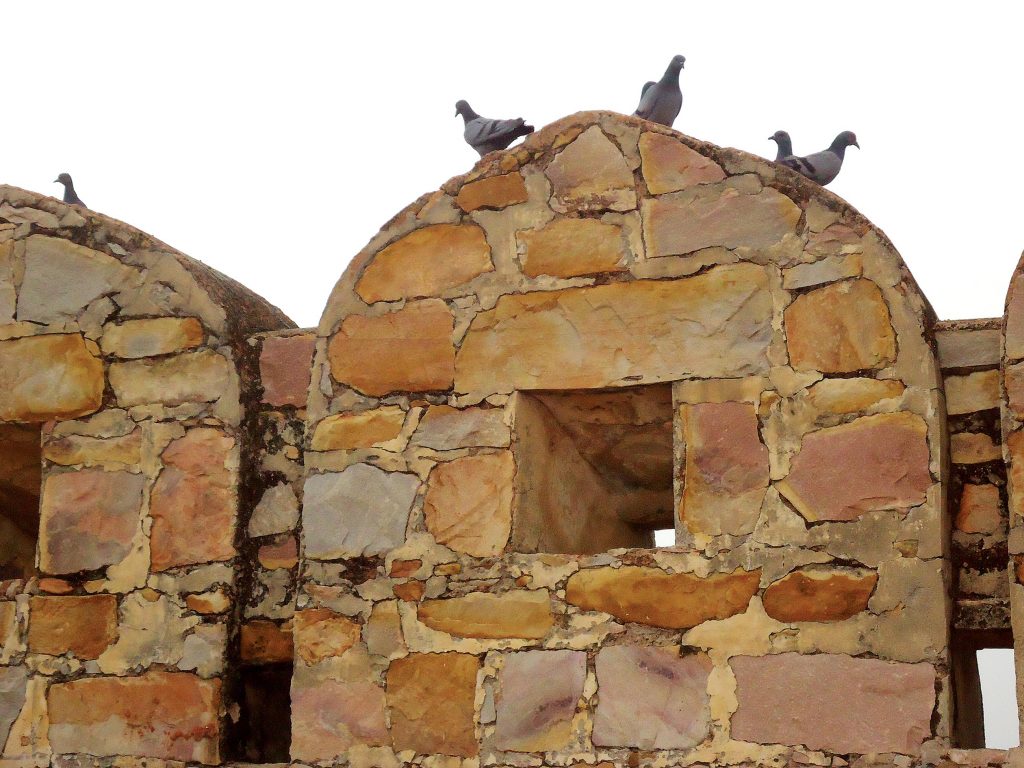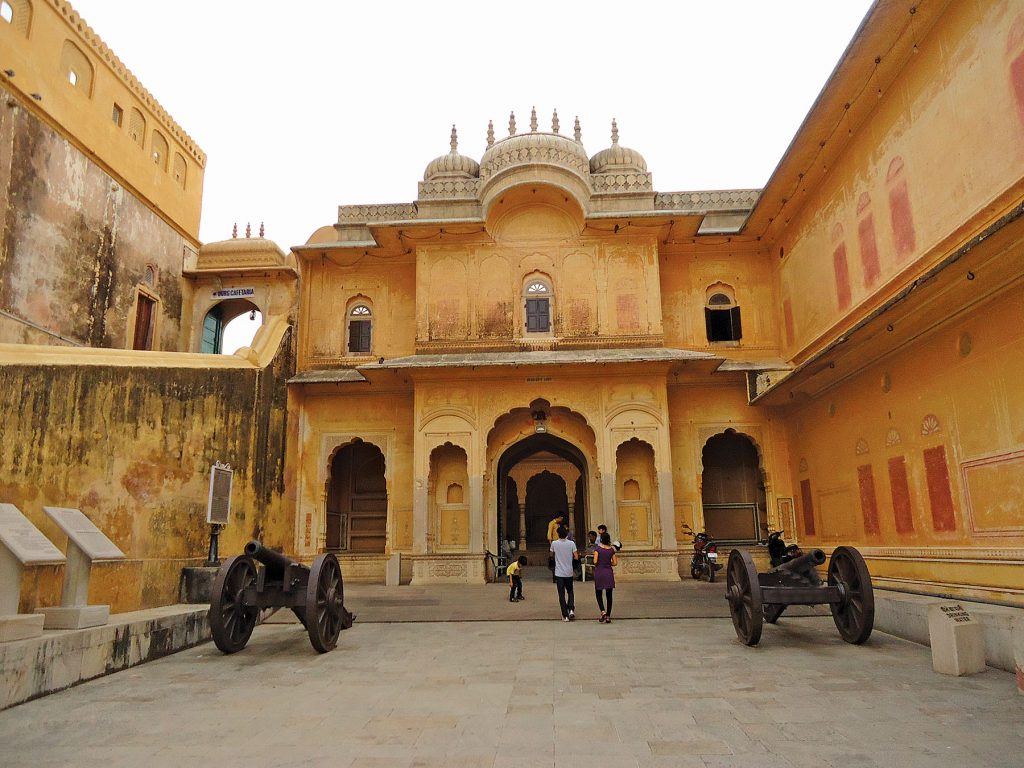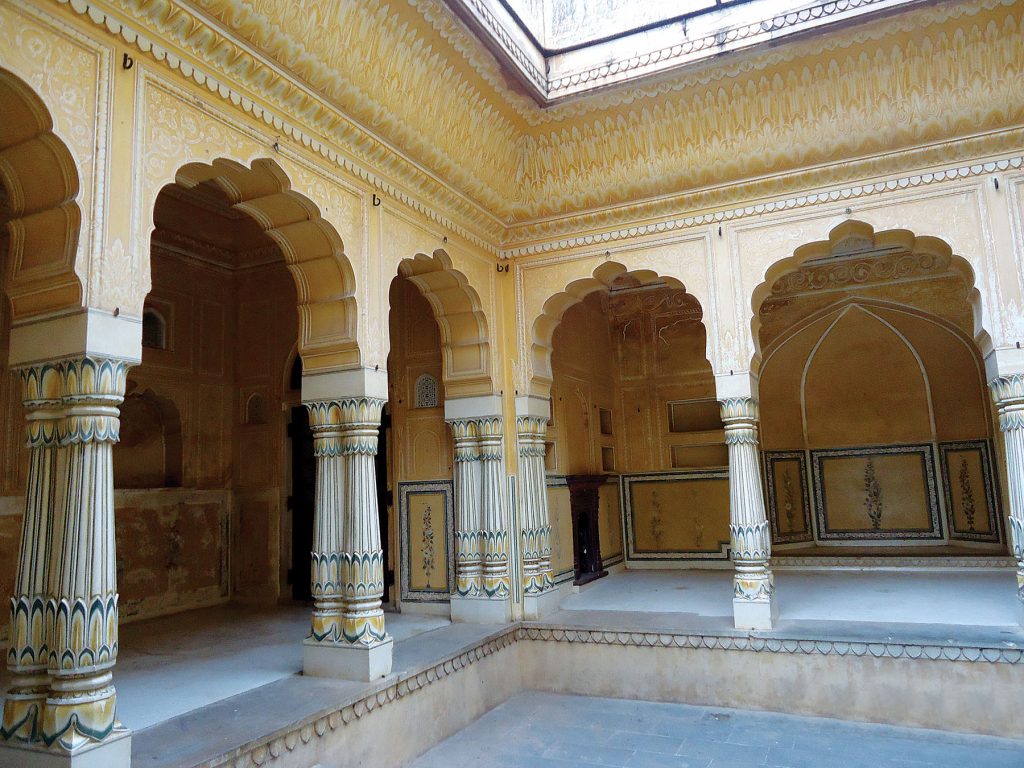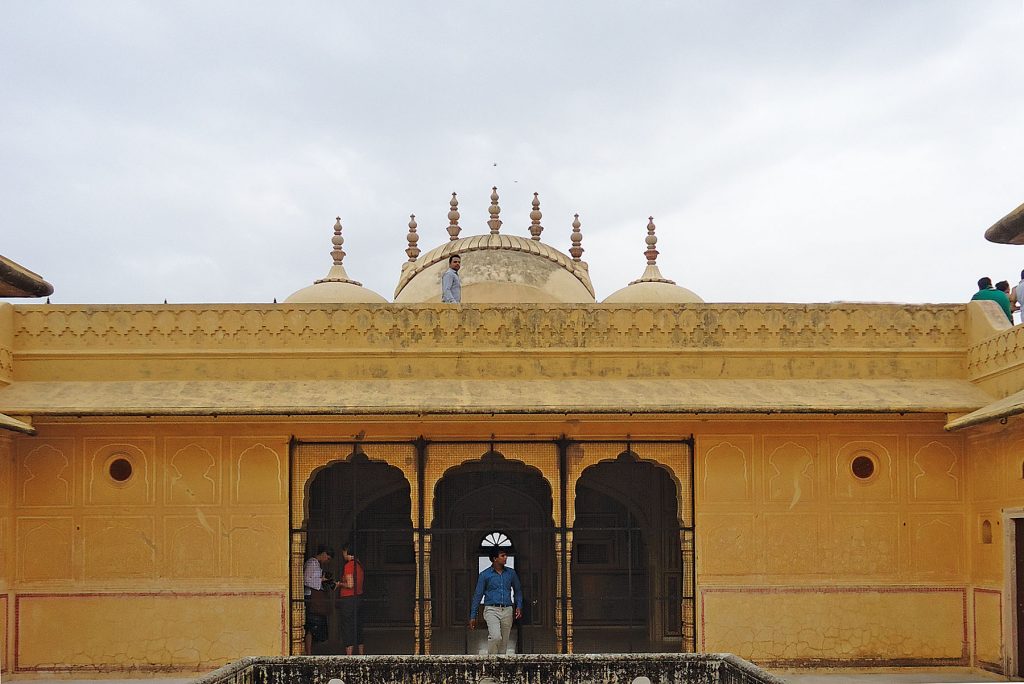Nahargarh Fort
Hungry Stones!
ʻIt is the same in love as in war; a fortress that parleys is half taken.ʼ—Marguerite de Valois

Nahargarh Fort, along with two other forts: Amer and Jaigarh: once formed a strong defense for Jaipur city. Built by Maharaja Sawai Jai Singh II in 1734, this fort was originally named Sudarshangarh Rajasthan is famous for its royal heritage. Formed by the union of many princely states ruled mainly by Rajputs, Rajasthan has many forts and palaces. Some of them are associated with important historical events.

Nahargarh Fort, along with two other forts: Amer and Jaigarh: once formed a strong defense for Jaipur city. Built by Maharaja Sawai Jai Singh II in 1734, this fort was originally named Sudarshangarh. Later, it was given a new name, Nahargarh, which means ʻabode of tigersʼ. Another popular belief is that ʻNaharʼ stands for Nahar Singh Bhomia, a Rathod prince who originally lived in this region and was very unhappy when his home territory was taken over by others. Apparently, his spirit haunted the place for years and obstructed the fortʼs construction till his soul was pacified by building a temple in his memory within the fort, which thus became known by his name and is still a house of worship. Located in one of the oldest mountain ranges of the world, the Aravalli hills, this fort gives you a breathtaking view of the scenic surroundings. One of the major tourist attractions of Jaipur, Nahargarh Fort was constructed as a place of retreat on the summit of the ridge above the main city. Walls extended over the surrounding hills, forming fortifications that connected it to Jaigarh, the fort above the old capital of Amber.

Nahargarh Fort follows the tenets of typical Indo-European architecture and there are many structures inside the premises. To the left of the entrance gate, there is a temple dedicated to the deity of Jaipur rulers. Apart from this, there is another temple inside the fort, dedicated to the Rathore prince. Yet another attraction is the Madhavendra Bhawan built by Sawai Madho Singh as a summer retreat for the royal princesses and ranis. This two-storey residence had suitesfor the king and his twelve queens. It was divided into nine similar apartments and each of them had a lobby, bedrooms, toilets, kitchen and store. Other structures inside the palace include a Diwan-e-Aam, an open air enclosure where the king met the common men and listened to their problems and complaints.

Though this place is no more in use, the suites and rooms still remain connected to each other via hallways and boasts gorgeous frescoes that decorate the interiors. Each and every suite of the Zenana is a splendid portrayal of Rajputanaʼs sumptuous décor. Essentially, the core structural design of the suites was based on Indian architecture with some European embellishments such as rectangular casements and European-styled lavatories. In addition, fireplaces were also built to ward off the chill during cold winter months. The womenʼs quarters were set up in a unique manner so that the Maharaja could pay a visit to any queenʼs room without the other consorts finding out. For the expediency of the king, each of the nine queens had their names emblazoned on their doors. Thakur Fateh Singh, an architect employed by the royal court, assisted in designing the exclusive ladies quarters. While Nahargarh Fort overlooks Jaipurʼs skyline by day, it creates a spectacular view when the city is lit up at night. Though a great deal of this unique fort is damaged at present, luckily, the 19th century embellishments, together with the rooms endowed for the maharanis and the sprawling walls of the fort are in good condition. The big cannons scattered across the Hazuri Burj were meant to defend the fort. However, as the metropolis never encountered any serious invasions from either the armed forces of other Rajput realms or the Mughals, the field guns were habitually fired to indicate the hour of the day. The royal women used the rooftop to enjoy leisurely walks.

Though the fort never came under attack during the course of its history, it did see some historical events, notably the treaties that were signed with the Maratha forces sparring with Jaipur in the 18th century. During the Indian Mutiny of 1857, the Europeans of the region, including the British Residentʼs wife, were moved to Nahargarh Fort by the king of Jaipur, Sawai Ram Singh, for their protection. The fort was extended in 1868 during the reign of Sawai Ram Singh. In 1883-92, a range of new palaces was built at a cost of nearly three and a half lakh rupees. Until April 1944, the Jaipur State government read the solar hours for official purposes from the Samrat Yantra in the Jantar Mantar Observatory, with a gun fired from Nahargarh Fort as the time signal. The stately richeswere protected safely in the fortress until Man Singh II transported them to Moti Doongri in 1940. The Nahargarh Fort presents beautiful panoramas of the Maan Sagar Lake. Hence, it continued to serve as a relaxing retreat for imperial guests and VIPs who often joined the king on hunts in the nearby jungles.

Nahargarh Biological Park is now a tourist attraction. It is an organic park that extends up to 7.2 sq kms of the Nahargarh sanctuary and boasts fine granite and quartzite rocks. The flora of the province is mainly symbolised by deciduous and humid jungles. Flocks of peacocks can still be spotted in this area along with a hyena or two. Today, Padao, an open-air restaurant with the remarkable backdrop of Jaipur, offers a glittering view of Jaipur at night. Meals with family and friends at Nahargarh Fort make you feel like royalty. Some scenes of the movie Rang De Basanti and Shuddh Desi Romance were shot at Nahargarh Fort.

